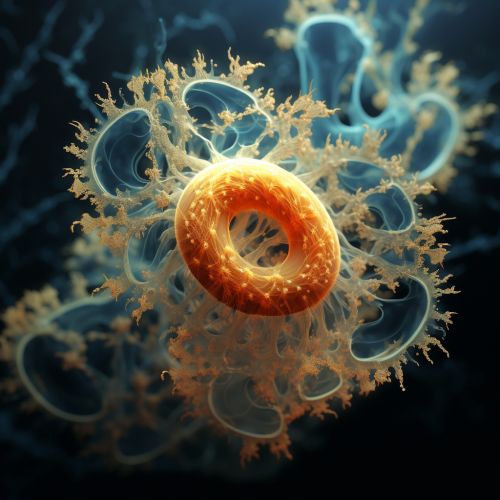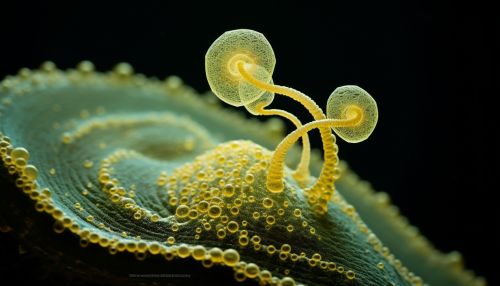Pseudopodia
Introduction
Pseudopodia, also known as false feet, are temporary, arm-like projections of a cell's cytoplasm. They are primarily used by unicellular organisms for movement and feeding. These projections are a common feature of amoeboid cells, which are found in various groups of protists, as well as in certain types of animal cells, such as white blood cells.


Structure and Formation
Pseudopodia are formed by the controlled flow of the cytoplasm, a process known as cytoplasmic streaming. This involves the polymerization of actin filaments at the leading edge of the pseudopod, which pushes the cell membrane outward. Concurrently, myosin motors contract the rear of the cell, pulling it forward. This coordinated process allows the cell to extend and retract its pseudopodia as needed.
Pseudopodia are not permanent structures. They can rapidly form and retract, allowing the cell to change direction and respond to its environment. This flexibility is crucial for the cell's survival, as it enables it to navigate towards food sources and away from threats.
Types of Pseudopodia
There are several types of pseudopodia, each with distinct characteristics and functions. These include:
- Lobopodia: These are broad, blunt extensions of the cell, often seen in amoebas. They are filled with both ectoplasm and endoplasm, the two main components of the cytoplasm.
- Filopodia: These are thin, thread-like projections that are filled with ectoplasm. They are often used for sensing the environment and are common in nerve cells.
- Axopodia: These are long, thin pseudopodia supported by a central core of microtubules. They are often used for capturing food.
- Reticulopodia: These are network-like extensions that can merge with each other to form a net. They are often used for locomotion and capturing food.
Functions of Pseudopodia
The primary function of pseudopodia is locomotion. By extending and retracting these projections, a cell can move towards or away from stimuli. This type of movement is known as amoeboid movement.
Pseudopodia are also used for feeding. The cell can extend its pseudopodia to surround and engulf food particles, a process known as phagocytosis. Once the food is engulfed, it is enclosed in a food vacuole where it is broken down and absorbed.
In addition to locomotion and feeding, pseudopodia also play a role in cell adhesion, cell division, and immune responses. For example, white blood cells use pseudopodia to move towards and engulf foreign particles and pathogens.
Pseudopodia in Different Organisms
While pseudopodia are most commonly associated with amoebas, they are also found in other organisms. For example, certain types of white blood cells, such as macrophages and neutrophils, use pseudopodia to move towards and engulf pathogens. This is a crucial part of the body's immune response.
Some types of cancer cells also exhibit pseudopodial activity. This allows them to invade surrounding tissues and spread throughout the body, a process known as metastasis.
